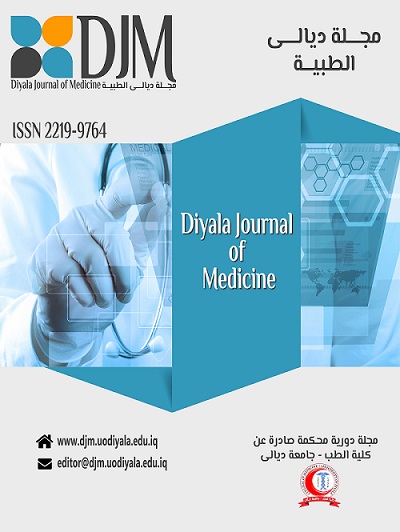Abstract
Background: Vertigo is a symptom that neurologists and otologists are confronted with.
Magnetic resonance image (MRI) is used for imaging.
Objective: To determine the diagnostic yield of MRI in patients with vertigo and to Identify
the most common causes.
Patients and Methods: This observational study involved 110 vertigo complaining patients
attending the MRI unit of Rizgary teaching hospital examined by 0.2 Tesla MRI between
June 2007 and September 2008.Collected variables divided into Group 1 (normal MRI) and
Group 2 (abnormal MRI) analysed and compared.
Results: Group 1= (70%) and Group 2=(30%), abnormal MRI findings in male patients was
(59.6%), in female (40.4%,) the commonest abnormalities were cerebellopontine angle (CPA)
space occupying lesions (SOL) (9.2%), cerebellar SOL (7.4%), 4th ventricle SOL (7.4%) and
deep white matter ischemia (7.4%), most of patients with vascular problems were more than 50
years. In (35.4%) of patients, vertigo was less than one month duration, (50%) of which had
abnormal MRI findings. Out of seven patients with normal MRI, 5 patients showed vascular
lesion on magnetic resonance angiography (MRA).
Conclusion: MRI remains important diagnostic tool for evaluation of vertigo and MRA is
necessary when vascular origin is suspected.
Magnetic resonance image (MRI) is used for imaging.
Objective: To determine the diagnostic yield of MRI in patients with vertigo and to Identify
the most common causes.
Patients and Methods: This observational study involved 110 vertigo complaining patients
attending the MRI unit of Rizgary teaching hospital examined by 0.2 Tesla MRI between
June 2007 and September 2008.Collected variables divided into Group 1 (normal MRI) and
Group 2 (abnormal MRI) analysed and compared.
Results: Group 1= (70%) and Group 2=(30%), abnormal MRI findings in male patients was
(59.6%), in female (40.4%,) the commonest abnormalities were cerebellopontine angle (CPA)
space occupying lesions (SOL) (9.2%), cerebellar SOL (7.4%), 4th ventricle SOL (7.4%) and
deep white matter ischemia (7.4%), most of patients with vascular problems were more than 50
years. In (35.4%) of patients, vertigo was less than one month duration, (50%) of which had
abnormal MRI findings. Out of seven patients with normal MRI, 5 patients showed vascular
lesion on magnetic resonance angiography (MRA).
Conclusion: MRI remains important diagnostic tool for evaluation of vertigo and MRA is
necessary when vascular origin is suspected.
Keywords
MRA
MRI
Vertigo
